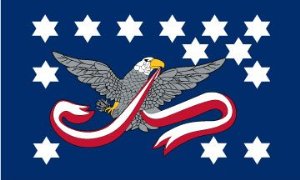With the American Whiskey Convention coming to Philadelphia, Pennsylvania’s whiskey history has been on the brain. Our most famous Pennsylvanian claim to historic infamy is the Whiskey Rebellion of 1794.
After the Revolutionary War, the newly formed United States were in a great deal of debt. Alexander Hamilton estimated that debt to be around $54 million. Hamilton was Secretary of the Treasury during George Washington’s presidency and he proposed the taxation of alcohol to pay off the country’s looming debt. The tax called for 11 cents per gallon of spirits. (To think that that amount of money could pay off that huge debt in a few years just goes to show how much Americans were drinking at the time.) In 1791, Washington and his new government began to enforce an excise tax on all spirits, foreign and domestic. To understand why this was so fervently rebelled against, you have to understand who was being taxed.
During the 18th century, about a quarter of a million Scots-Irish immigrants had made their way across the Atlantic Ocean to America. Many Germans had moved into western Pennsylvania as well and they would become the Pennsylvania Dutch. They wanted to settle and build farming homesteads for themselves and their families. These immigrants brought their stills with them to their new homesteads along with their distilling expertise. Rum was the preferred drink in America until the British began to tax sugar and molasses, leading the colonists to make spirits from what they had on hand- grain. The Scots-Irish found that barley, which they had used back home to brew and distill into liquor, did not fare as well as rye in this new soil. Rye, in the western part of the country was the grain that made America’s first whiskeys. The settlers’ surplus grain from seasonal harvests were brewed and distilled into whiskey. Without a banking system or printed money, most Americans were employing a barter system and whiskey was a big part of commerce and trade. The government was asking for monetary taxes on a product that itself served as a form of currency to the people being taxed! Stills near the city could be assessed and taxed accordingly, but “country stills” were taxed on potential capacity assuming they were running regularly- That was certainly not the case.
Many of these hardy westerners had been soldiers during the Revolution to fight and put an end to the tyranny of the British over the colonies. Now after fighting off a tyrannical government, succeeding in winning and returning home to their families, their new government wanted to tax them on their only means of steady income. Nowhere in the newly formed United States was there as universal an outrage as in western Pennsylvania. Tax collectors were burned in effigy. A few revenue agents were tarred and feathered! At one point in 1791, a mob of 5000 descended on Pittsburgh and threatened to burn down the city. The opposition to the new excise taxes grew over the years and became more violent and aggressive. One man, David Bradford, rallied men behind him, even calling for the creation of a Western United States separate from the established colonies.
George Washington had to tread lightly here. He would need to get control of the situation, but couldn’t be sure that the newly formed country could be asked to rally behind him against their fellow citizens, even if it was to keep the peace. He attempted to drop the amount of the tax, but to no avail. With a rebellion on his hands, he was forced to call out the militia and rally troops. Some believe that this was Washington testing his new authority as President. This was his first time enforcing federal law and when 13,000 troops mustered, he could see that his power as President was legitimate and in place. This was the only occasion that a sitting President marched into battle, they say. Washington never made it all the way out to the Pittsburgh area as the rebellion and its instigators dispersed before the troops arrived.
The excise tax remained in place for the next six years (until Jefferson became president) and only managed to raise about 5 million for the government in taxes. The Whiskey Rebellion cost the government about 1.5 million to put an end to. Though the tax was not a success in the long run, the establishment of credibility for the newly formed United States couldn’t have been achieved without an end to the hostilities by George Washington. Many people say that the Whiskey Rebellion led to the movement of Pennsylvanian distillers into Kentucky creating a new bourbon distilling movement. That is not the case. Corn, as a base for whiskey mashes further south, had already been going on before the rebellion. A bourbon style of whiskey, though not the same as we think of it today, was already firmly established by farmer-distillers in Kentucky where corn grew more easily in their soil and climate. Farmers in Kentucky, Maryland, and Virginia were also involved in their own rebellious disputes against Washington and Hamilton’s excise tax, they just were more difficult to get to and fell into line after Pennsylvania fought the law- And the Law won.

